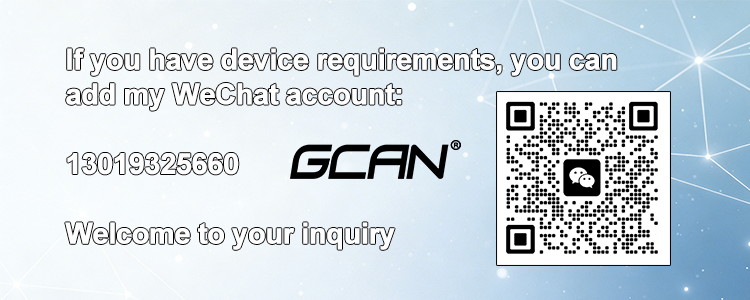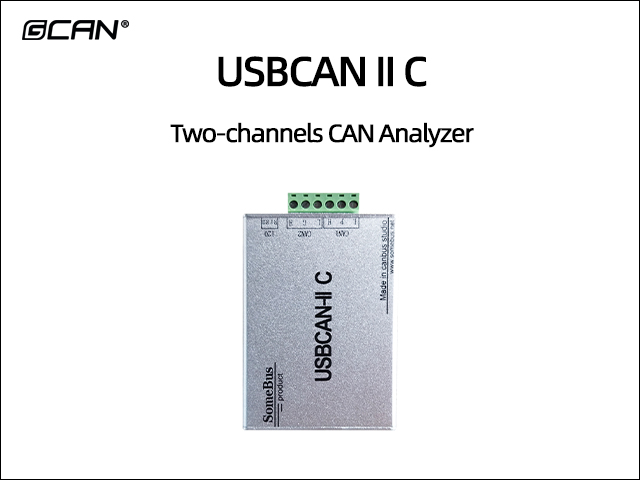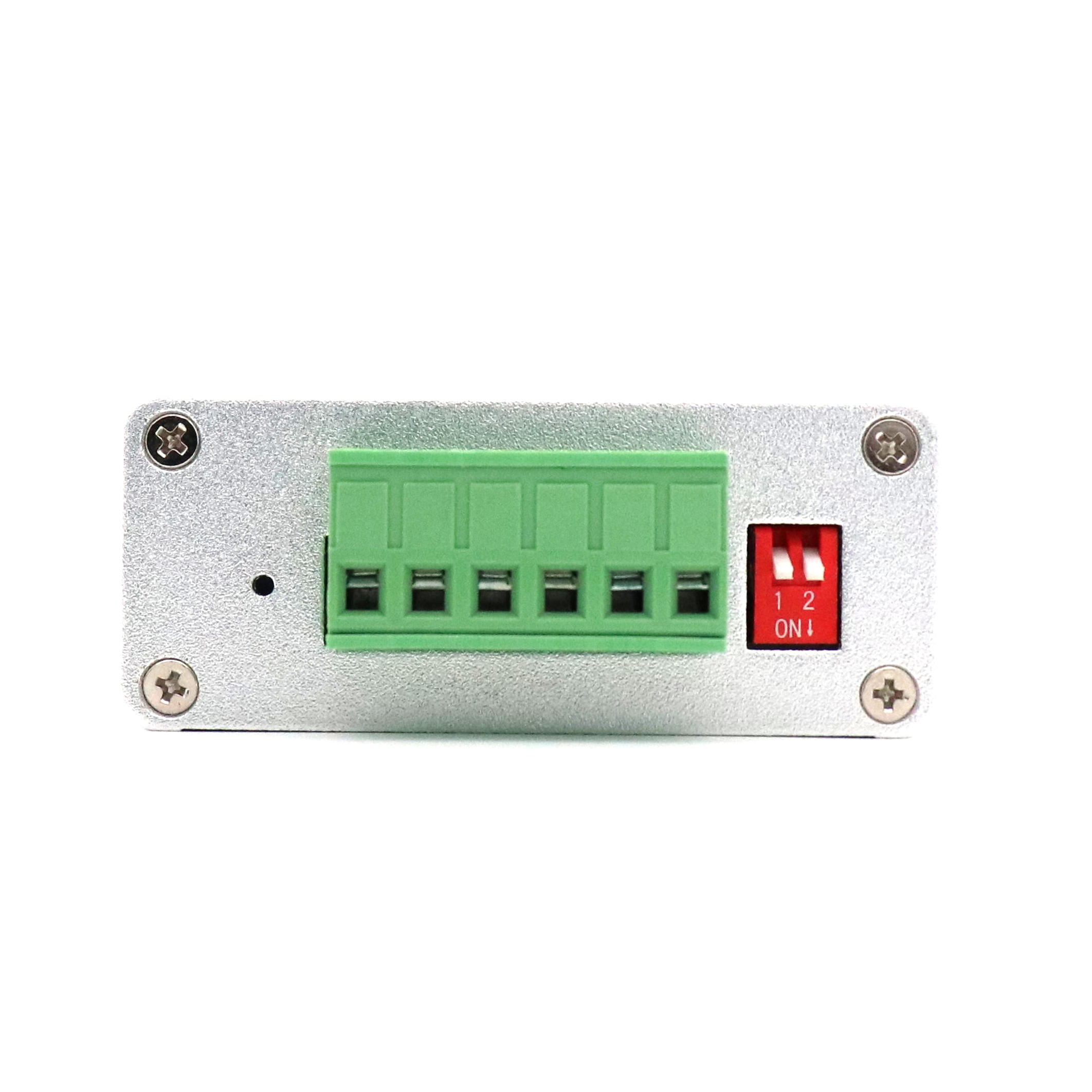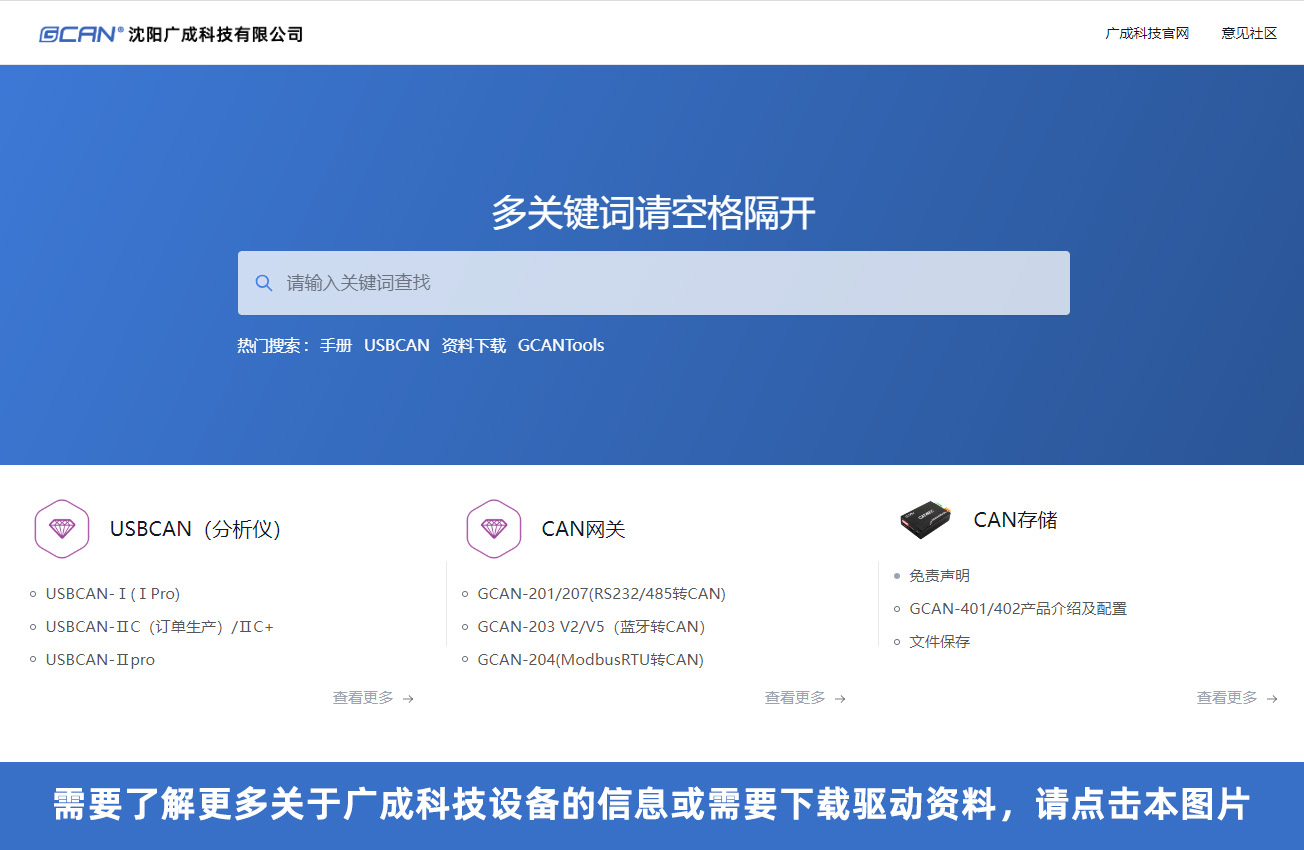USBCAN II C Two-channels CAN Analyzer
- Brand:
- GCAN
- Model:
- USBCAN-II C
- Application:
- ● CAN bus network diagnosis and testing ● Automotive Electronics Applications ● Electric power communication network ● Industrial control equipment ● High speed and large data communication
-
1、 Equipment Introduction
USBCAN-II C is an industrial grade CAN bus communication interface card that integrates two CAN interfaces. This model of CAN card is compatible with the USB 2.0 bus full speed specification and uses a USB CAN-II C interface card. PCs can quickly connect to CAN bus networks through the USB interface, forming CAN bus network control nodes for data processing and data acquisition in CAN bus network fields such as fieldbus laboratories, industrial control, intelligent communities, and automotive electronic networks.
The USBCAN-II C interface card is a powerful tool for CAN bus product development and CAN bus data analysis; At the same time, it has the characteristics of small size and plug and play, and is also the best choice for portable system users. The USBCAN-II C interface card comes with a CAN interface electrical isolation protection module, which prevents equipment damage caused by transient overcurrent/overvoltage and enhances the reliability of the system in harsh environments.
The USBCAN-II C interface card supports 32-bit/64 bit operating systems such as Windows 2000, XP, 7, 8, 10, etc. Our company provides users with a unified application programming interface and complete application demonstration code, including C #, LabVIEW, Python, Qt, VB.net, VB, VC and other development routine demonstrations, to facilitate user application development.
The USBCAN-II C interface card can use GCANTools, CAN Test, and CAN Pro universal testing software to perform functions such as sending, receiving, and monitoring CAN bus messages.
2、 Equipment parameters
● The PC interface complies with the USB 2.0 full speed specification and is compatible with USB 1.1 and USB 3.0;
● Integrate 2 CAN bus interfaces and use Phoenix terminal wiring method;
● Supports CAN2.0A and CAN2.0B frame formats, compliant with ISO/DIS 11898 specifications;
● The CAN bus communication baud rate can be programmed between 5Kbps and 1Mbps;
● Use USB bus power supply or add an external power supply (+9-24V DC, 130mA) when the power supply is insufficient;
● The CAN bus interface adopts electrical isolation, and the insulation voltage of the isolation module is 3000V DC;
● Electrostatic discharge immunity level: Contact discharge ± 4KV, air discharge ± 8KV;
● Electrical fast transient burst immunity level: CAN bus interface ± 2KV;
● Surge immunity level: CAN bus interface ± 4KV;
● Maximum received data traffic: 8000 fps;
● Supports Windows operating systems such as Win2000, WinXP, Win7, Win8, Win10, etc;
● Support GCANTools, CAN Test, CAN Pro testing software;
● Working temperature range: -40 ℃~+85 ℃;
3、 Application Fields
● CAN bus network diagnosis and testing
● Automotive Electronics Applications
● Electric power communication network
● Industrial control equipment
● High speed and large data communication
Welcome to inquire and learn more.
- ● The PC interface complies with the USB 2.0 full speed specification and is compatible with USB 1.1 and USB 3.0;
● Integrate 2 CAN bus interfaces and use Phoenix terminal wiring method;
● Supports CAN2.0A and CAN2.0B frame formats, compliant with ISO/DIS 11898 specifications;
● The CAN bus communication baud rate can be programmed between 5Kbps and 1Mbps;
● Use USB bus power supply or add an external power supply (+9-24V DC, 130mA) when the power supply is insufficient;
● The CAN bus interface adopts electrical isolation, and the insulation voltage of the isolation module is 3000V DC;
● Electrostatic discharge immunity level: Contact discharge ± 4KV, air discharge ± 8KV;
● Electrical fast transient burst immunity level: CAN bus interface ± 2KV;
● Surge immunity level: CAN bus interface ± 4KV;
● Maximum received data traffic: 8000 fps;
● Supports Windows operating systems such as Win2000, WinXP, Win7, Win8, Win10, etc;
● Support GCANTools, CAN Test, CAN Pro testing software;
● Working temperature range: -40 ℃~+85 ℃;
- Packing
Standard package:Carton
Delivery Time
2~5 days after receipt of your payment by air express
After-sale service
GCAN provide one year free after-sales warranty,lifetime free software and technical support. 






